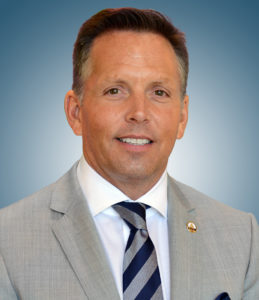
 As a member-owned cooperative, a credit union’s success is directly related to the financial health of the people who use its services every day. This symbiotic structure is why credit unions remain the safest and most consumer-friendly option for financial services.
As a member-owned cooperative, a credit union’s success is directly related to the financial health of the people who use its services every day. This symbiotic structure is why credit unions remain the safest and most consumer-friendly option for financial services.
This is the reason the government was not bailing out credit unions after the 2008 financial crisis. Washington seems to have forgotten who was responsible for that crisis. Regulations written and created to police the bad behavior of Wall Street and big banks have been slapped onto credit unions, too.
These massive one-size-fits-all regulations have been detrimental to many Florida credit unions, with limited resources as not-for-profit financial institutions. It is simply not reasonable to treat behemoth financial institutions the same way as not for profit, member-owned and governed credit unions.
How can the big banks collapse the economy and emerge in even better shape than the credit union industry that safeguarded its members all along? This is unjust.
Certainly, Congress was not ill intended when they created the Consumer Financial Protection Bureau (CFPB). Protecting consumers from the irresponsible behavior we saw from big banks makes sense. It was not reasonable, however, for this agency to blanket all financial institutions with the exact same regulations, regardless of size.
It is not common sense for Florida credit union members, to pay for the mistakes of the big banks. Something must be done.
As the 115th Congress works on these and other issues, credit unions need support from our elected officials for legislation that will rectify these problems. We need legislative fixes that will direct the CFPB to treat credit unions like credit unions, and not like big banks. We need more oversight at the CFPB, such as the installation of a multimember board instead of one, single-minded director.
Since the financial crisis, more Americans have chosen credit unions as their best financial partner. In fact, in 2015, 3.5 million Americans joined credit unions. Compared to other providers, credit unions offer services to lower-income members at prices that are much more affordable.
A study found that the fees banks collect on an annual basis on low-balance checking accounts are two and a half times higher than what they collect on high-balance accounts.
The Credit Union National Association (CUNA) estimates that Florida credit unions provided more than $517,648,000 in direct financial benefits to the state’s 5,249,940 members during the 12 months ending in September 2016. These benefits are equivalent to $99 per member or $187 per member household.
Estimated total benefits of credit union membership are calculated by accounting for differences in credit union and bank pricing. Specifically, average credit union savings account yields, loan interest rates and fees are compared to average bank savings account yields, loan interest rates and fees. The interest rate differences are then applied to respective average credit union loan and savings balances. Fee differences are weighted and applied to credit union non-interest income to obtain the total estimated benefits arising from fees.
The per-member and per-household benefits delivered by Florida credit unions are substantial, but these benefits are averages. Mathematically, that means the total benefits provided are divided across all members (or all member households) – even those who conduct very little financial business with Florida credit unions.
I hope my members of Congress will support regulation measures and preserve the tax-exempt status of credit unions. Our members, your constituents and your communities need relief.
___
Patrick La Pine is president/CEO of the League of Southeastern Credit Unions & Affiliates.
The League of Southeastern Credit Unions represents 261 credit unions in Alabama and Florida with a combined total of $76 billion in assets and more than 7 million members. LSCU provides advocacy and regulatory information; education and training; cooperative initiatives (including financial education outreach); media relations and information; and business solutions.



